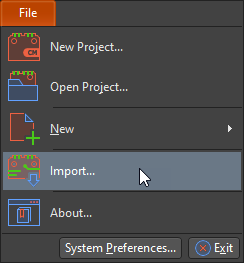Why Wearable Technology is the Future and How It Will Be Seamless and Convenient
Table of Contents
When I was younger I was a bit of a nerd, and I guess I still am. The most visible sign of my nerdiness was my fashion sense or lack of it. Tall socks, cargo shorts, and a brown Pacman hoodie that I wore in every season, except summer, made up my daily wardrobe. I was simply more interested in gizmos and gadgets than I was in looking good. I’m still more interested in fashionable electronic devices than clothes, but the line between the two is beginning to fade. Current wearable technologies can sometimes be clunky and unfashionable. That’s why in the future, they’ll be seamlessly integrated into the things we already wear. However, looks aren’t the only concern. Convenience is also a major factor in the wearables space, and next gen's fashion electronic devices will need to operate with less hassle than current products.
Seamless
Do you remember those Heely shoes? I never had a pair, but the kids that did were the coolest around. One of the most impressive things about Heelys was how seamlessly they integrated a wheel into a shoe. They didn’t seem different from any other shoe until the person wearing them started rolling off into the sunset. Electronics will be assimilated into clothing in the same way. There are already several devices out there that are trying to combine cloth and circuits, but they’re not all doing a great job. Things like flexible circuits can help companies make the jump from clunky to chic.
They say that there is nothing new under the sun, and apparently, wearable technology in the future is no exception. While we think of wearables as recent technology, there’s one example from the early days of computing that reminds us what not to do; the Nintendo power glove. This glove was everything wearables should not be, large, clunky, difficult to use, and unfashionable. That being said, if I had one I would wear it out at least once. A more modern electronic fashion faux pas would be the “Beauty and the Geek” keyboard pants. They basically wanted to put a keyboard on your crotch. While the technology is integrated into clothing, it’s not what I would call seamless.
The power glove is so cool and yet so clunky. Image Credit: Flickr User mmechtley
One company that gives us an example of how to do things both right and wrong is Sensoria. I wrote about their smart sock not long ago, and it’s at once both bulky and brilliant. Currently, their smart socks incorporate an anklet and several flexible sensors into a tall sock. The flexible sensors on the pads of the feet are as seamless as you can get. The anklet is a different story. You have to roll the top of the sock down over the anklet to hold it in place, which reminds me of when I rolled down my tall socks as a child because I wanted cool short socks like the other kids. That’s something I never want to relive. Sensoria is making headway, though, by developing a new chip that can be embedded into the fabric which is much better than an anklet. Now they need to take it one step further and make it flexible.
Flexible electronics have been around for a while, and are particularly useful in areas like the aerospace industry. NASA is currently postulating the next step in flexible electronics, fully printable flexible circuits. PCBs like these could actually be seamlessly integrated into the fabric. Some companies have already begun experimenting with this concept through things like knitted electronics and dresses with embedded LEDs. These, however, don’t go far enough. Wearable technology in the future lies in creating and incorporating flexible components like microprocessors, memory, and sensors.
Convenience
Why did I wear cargo shorts all those years ago? One word, convenience. I could stuff anything into those pockets that I’d need for the day. The only inconvenient thing was how out of style they were. One of the most annoying things about today’s wearables is having to charge them. New technologies like wireless charging and in situ energy harvesting can help bring convenience to wearables.
I didn’t look half this good in my cargo shorts.
Charging is a hassle for connected devices. For wearables, this problem is being addressed in the more lucrative sphere of Internet of Things (IoT) sensor networks. Companies are developing ultra-low power components, like memory, so that devices can drastically reduce their power requirements. With energy usage at a minimum, future wearable tech could make use of things like wireless charging or onboard energy harvesting. Some companies are even exploring solar power for charging devices. Regardless of the method, wearables need to be charged without using proprietary cables and connectors.
Wearable technology in the future is an exciting new field, but it has some hurdles to overcome. If companies want people to wear their products, they’ll have to integrate them seamlessly into the things we already have. That kind of assimilation will require fully flexible circuits that can be directly embedded into fabrics. Looks aren’t the only thing we’re watching out for, we also need convenience. The charging mechanisms for current wearables are tiresome in the extreme. That’s why next-gen technology will need to incorporate some kind of onboard charging scheme.
When you need to access an easy-to-use PCB layout tool that includes everything needed to build high-quality manufacturable circuit boards, look no further than CircuitMaker. All CircuitMaker users also have access to a personal workspace on the Altium 365 platform. You can upload and store your design data in the cloud, and you can easily view your projects via your web browser in a secure platform.
Start using CircuitMaker today and stay tuned for the new CircuitMaker Pro from Altium.

















